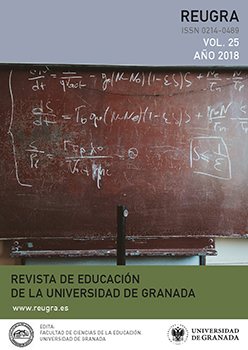Relation between Complexity and Difficulty in Reiterative Linear Pattern Tasks with 5-Years Old Students
Main Article Content
Abstract
One of the purposes of the teaching of Mathematics in Early Childhood Education is to encourage logical thinking, creativity and the ability to solve problems of students. Among the typical school activities of these ages it is common to find tasks of identification and continuation of reiterative linear patterns. This activity can be studied from a problem-solving context with surplus data. In it, students must discriminate superfluous information from the one that allows him to obtain the series generation rule and solve the task. Different variables such as the repetition pattern length, the number of descriptors, their nature or the presence of distractors allow us to establish different degrees of complexity in the task. Our aim is to explore which factors related to the complexity affect the difficulty experienced by five-year-old students of Early Childhood Education when dealing with this kind of problems. The results obtained indicate that factors such as the presence of distractors or the repetition of attributes in the pattern significantly affect the success rate, while others such as the pattern length or the type of descriptor do not offer significant differences.



